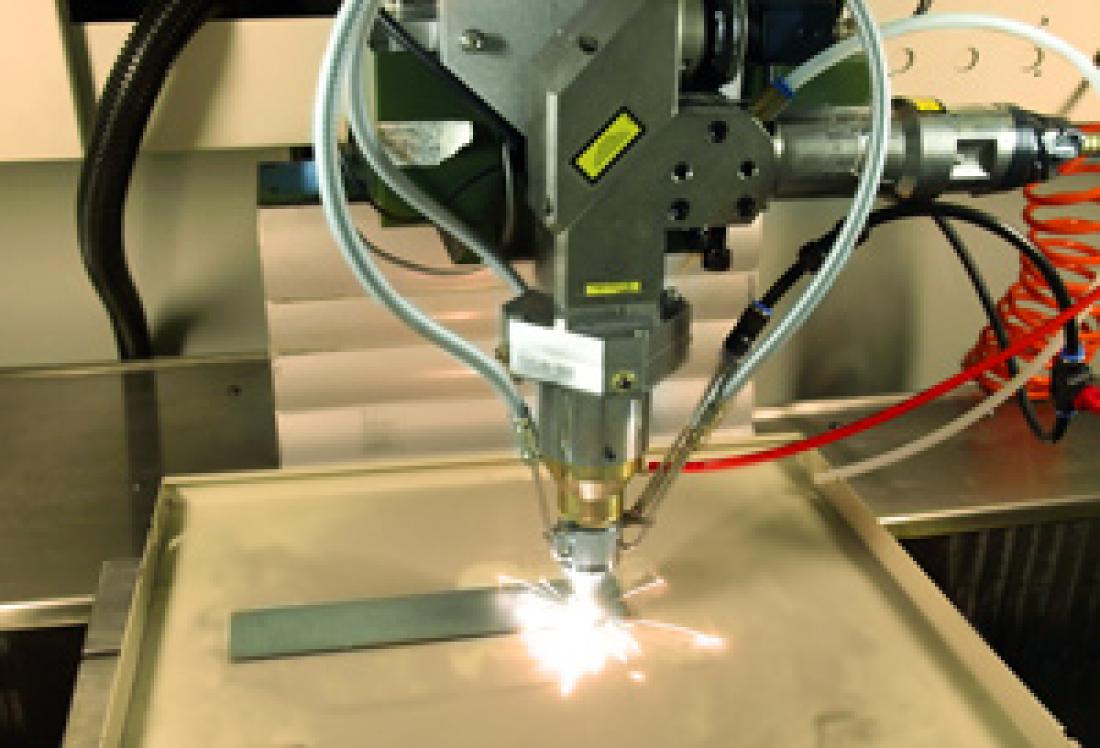Micro-laser-aided additive manufacturing uses a very fine laser beam as a heat source to melt and deposit materials.
© 2015 A*STAR Singapore Institute of Manufacturing Technology
A fabrication technique that uses lasers to deposit superalloys with fewer cracks and excellent mechanical properties has been developed by A*STAR researchers.
Alloys are mixtures of two or more metallic elements. The composition of an alloy can be tuned to give the material the best possible properties. For example, the metals chromium, cobalt, molybdenum, titanium and aluminum are added to nickel-based superalloys to impart them with excellent mechanical strength, high creep resistance at elevated temperatures and superior surface stability as well as good resistance to both corrosion and oxidation.
Now, Guijun Bi and his colleagues at the A*STAR Singapore Institute of Manufacturing Technology have used a technique known as laser-aided additive manufacturing to optimize the properties of a nickel-based alloy called IN100 — a heat-resistant material first developed for use in gas turbines. Unfortunately, its high titanium and aluminum contents (these two elements account for over 11 per cent of the alloy) makes the alloy prone to cracking over time or during fusion deposition and welding. “This is why IN100 is typically produced in cast or powder forms,” explains Bi. “Techniques such as fusion deposition have never been attempted on IN100 because the rapid cooling during laser processing is likely to induce stress cracking.”
Bi and the team showed that the IN100 fabricated using their technique is far more resistant to this deleterious cracking. During the laser-aided additive manufacturing process, the researchers fired a beam from an infrared laser to form a melt pool on the substrate surface. At the same time, IN100 powders with particle sizes between 20 and 46 micrometers were delivered to the melt pool via a powder feeding nozzle. The powders were melted and deposited onto a cast IN100 substrate (see image). Finally, they strengthened the alloy by subjecting it to a three-step post heat treatment process, in which the maximum temperature was 1,080 degrees Celsius.
The team investigated the structural and physical properties of their alloy by using optical and electron microscopy as well as X-ray analysis. Their analysis showed that the material was free of cracks and had a low porosity. They attribute this outcome to the relatively low heat input of their deposition process. This is because they used a small laser spot in the process; it was less than 500 micrometers in diameter — about half the diameter of laser spots used in traditional material deposition.
“Our method improves the controllability of the heat input during the deposition process,” says Bi. “It can reduce both the depth of the heat-affected zone and residue stress accumulated in the deposited material.”
The A*STAR-affiliated researchers contributing to this research are from the Singapore Institute of Manufacturing Technology. More information about the group’s research can be found at the Joining Technology Group webpage.
Reference
Bi, G., Sun, C.-N., Chen, H.-C., Ng, F. L. & Ma, C. C. K. Microstructure and tensile properties of superalloy IN100 fabricated by micro-laser aided additive manufacturing. Materials & Design 60, 401–408 (2014).



